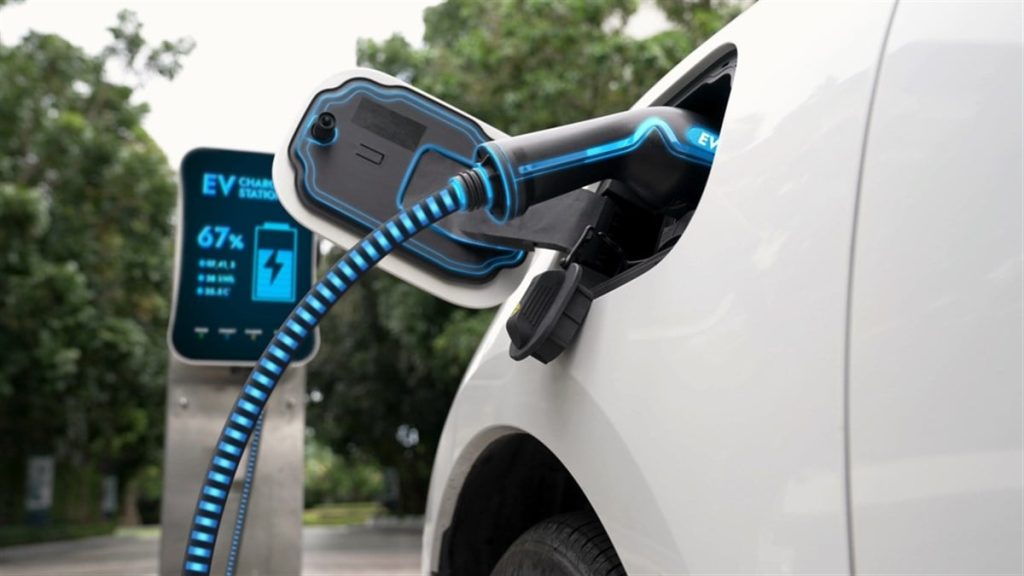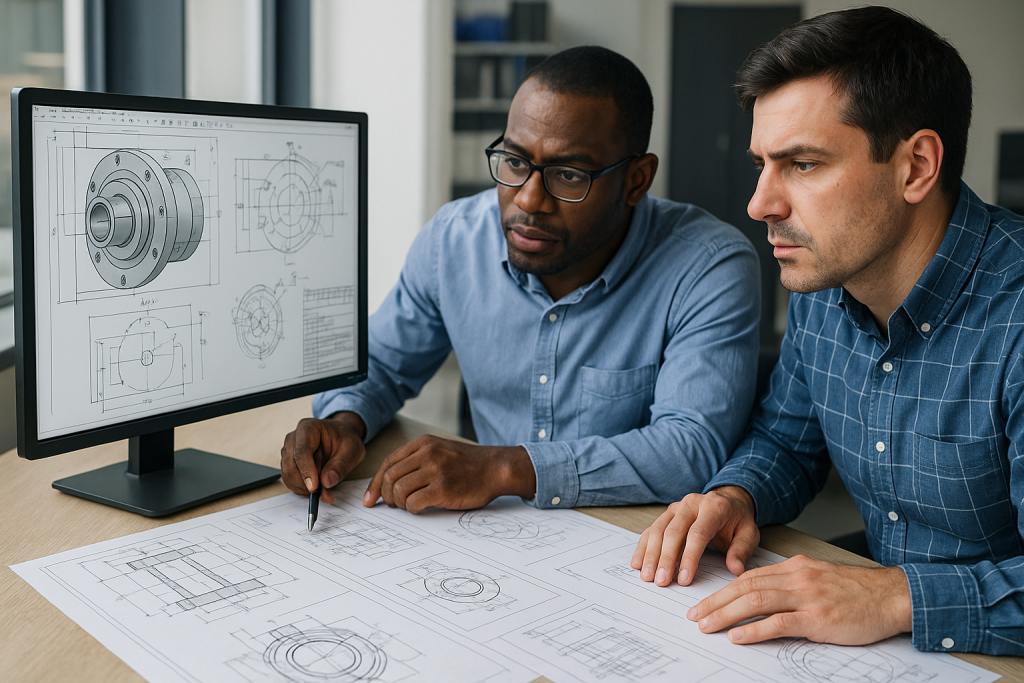
The electric vehicle (EV) industry is experiencing unprecedented growth. From startups pushing innovative designs to global automakers racing to expand their EV lineups, the pace of innovation is accelerating. To keep up, manufacturers need a way to quickly turn concepts into physical components for testing and validation.
This is where rapid prototyping becomes indispensable. By transforming digital CAD models into real-world parts in just days, rapid prototyping is helping drive the EV revolution forward.
I. What is Rapid Prototyping?
Rapid prototyping is the process of quickly creating scale models or functional parts from 3D CAD designs. Instead of waiting weeks for traditional tooling, companies can now have parts in hand within days, drastically accelerating product development.
At BOONA Prototypes, rapid prototyping services include:
-
CNC machining for precision metal and plastic parts.
-
3D printing for complex geometries and fast iterations.
-
Vacuum casting for high-quality low-volume production.
-
Sheet metal fabrication for structural EV components.
II. Why Rapid Prototyping Matters for EV Development
EV manufacturers face unique challenges compared to traditional automakers:
-
Battery modules require precise thermal management.
-
Lightweight materials are essential for extended range.
-
Aerodynamic designs demand complex shapes.
-
Consumer expectations for design and technology integration are higher than ever.
Rapid prototyping supports:
-
Faster design iterations: Engineers can test multiple design versions within a short time.
-
Functional testing: Parts can be created with end-use materials to simulate real performance.
-
Cost savings: Avoids expensive tooling during early design phases.
III. Key Rapid Prototyping Technologies for EV Components
| Technology | Best For | Typical Lead Time | Material Options | Applications in EVs |
|---|---|---|---|---|
| 3D Printing | Complex geometries, lightweight designs | 1–3 days | PLA, ABS, Nylon, Resin | Dashboard models, cooling ducts |
| CNC Machining | High precision, functional parts | 3–7 days | Aluminum, Steel, PEEK | Battery enclosures, motor mounts |
| Vacuum Casting | Low-volume production, aesthetic prototypes | 5–10 days | PU, ABS-like resin | Interior panels, lighting housings |
| Sheet Metal Fabrication | Structural strength | 5–12 days | Stainless steel, Aluminum | Chassis brackets, battery trays |
IV. Workflow: From CAD to EV Test Component
The rapid prototyping process typically follows these steps:
-
Concept & CAD Modeling – Engineers create detailed 3D models.
-
Material & Process Selection – Choose the right manufacturing process based on performance needs.
-
Fabrication – Components are produced using methods like CNC machining or 3D printing.
-
Testing & Validation – Fit, finish, and functional performance are verified.
-
Iteration – Designs are updated and retested until optimal results are achieved.
V. EV-Specific Applications
Some of the most common EV components produced through rapid prototyping include:
-
Battery enclosures – CNC aluminum prototypes for thermal testing.
-
Cooling ducts – 3D printed for airflow optimization.
-
Instrument panels – Vacuum-cast for ergonomic evaluation.
-
Lightweight brackets – Sheet metal fabricated for structural support.
VI. Technical Parameters: CNC Machining for EV Parts
| Parameter | Capability |
|---|---|
| Maximum part size | 2000 × 1500 × 300 mm |
| Tolerance | ±0.01 mm |
| Surface finish | Ra 0.8–3.2 μm |
| Supported metals | Aluminum 6061/7075, Stainless Steel 304/316, Copper, Brass |
| Supported plastics | ABS, POM, PEEK, Nylon, Acrylic |
VII. BOONA’s Advantage for EV Prototyping
Located in Shenzhen, BOONA Prototypes has been serving global clients since 2004, offering:
-
Fast turnaround – Parts in as little as 1–3 days.
-
One-stop service – From concept to finished prototype.
-
Wide material selection – Plastics, metals, and composites.
-
Global delivery – Serving EV companies worldwide.
For more details, visit BOONA Rapid Prototyping Services.
VIII. Future Trends
-
Hybrid prototyping: Combining virtual simulations with physical prototypes.
-
Advanced materials: Carbon fiber and lightweight alloys for better efficiency.
-
Localized production: Near-shore manufacturing for faster delivery to EV markets.
Conclusion
The EV revolution is transforming the automotive landscape, and rapid prototyping is the engine driving innovation forward. With the ability to produce functional, precise, and visually accurate components in a fraction of the time, companies like BOONA Prototypes are helping EV manufacturers bring their visions to life faster than ever.
FAQs
1. What is rapid prototyping in electric vehicle manufacturing?
Rapid prototyping is the process of quickly producing physical models or functional components from digital CAD designs. In the EV industry, this helps manufacturers test, validate, and refine designs before moving to mass production. BOONA Prototypes offers CNC machining, 3D printing, vacuum casting, and sheet metal fabrication to support EV development.
2. How does rapid prototyping benefit electric vehicle manufacturers?
Rapid prototyping shortens development cycles, reduces costs, and allows engineers to test multiple design variations. For EVs, it means faster innovation in battery enclosures, lightweight components, cooling systems, and aerodynamic body parts. You can explore CNC machining services for high-precision EV parts.
3. Which materials are commonly used in EV rapid prototyping?
Common materials include:
-
Metals: Aluminum 6061/7075, Stainless Steel 304/316, Copper, Brass
-
Plastics: ABS, POM, Nylon, PEEK, Acrylic
BOONA rapid prototyping services offer a wide selection to meet strength, heat resistance, and lightweight requirements.
4. How fast can BOONA deliver EV prototypes?
Lead times depend on complexity and process:
-
3D Printing: 1–3 days
-
CNC Machining: 3–7 days
-
Vacuum Casting: 5–10 days
BOONA specializes in fast prototyping with global delivery.
5. What EV components are best suited for rapid prototyping?
Examples include:
-
Battery enclosures and cooling plates
-
Structural brackets and chassis components
-
Dashboard panels and instrument clusters
-
Custom aerodynamic parts
These can be made using sheet metal fabrication or 3D printing depending on the application.
6. Can rapid prototyping produce functional EV parts or only visual models?
Rapid prototyping can produce both:
-
Visual models: For design evaluation and ergonomic testing
-
Functional prototypes: Made with end-use materials for real-world testing
BOONA offers functional CNC machining to ensure EV parts meet performance standards.
7. How does BOONA ensure precision in EV prototypes?
BOONA uses advanced CNC machines, 3D printing systems, and quality inspection tools to achieve tolerances as tight as ±0.01 mm. Their CNC machining services are ideal for high-precision EV components.



